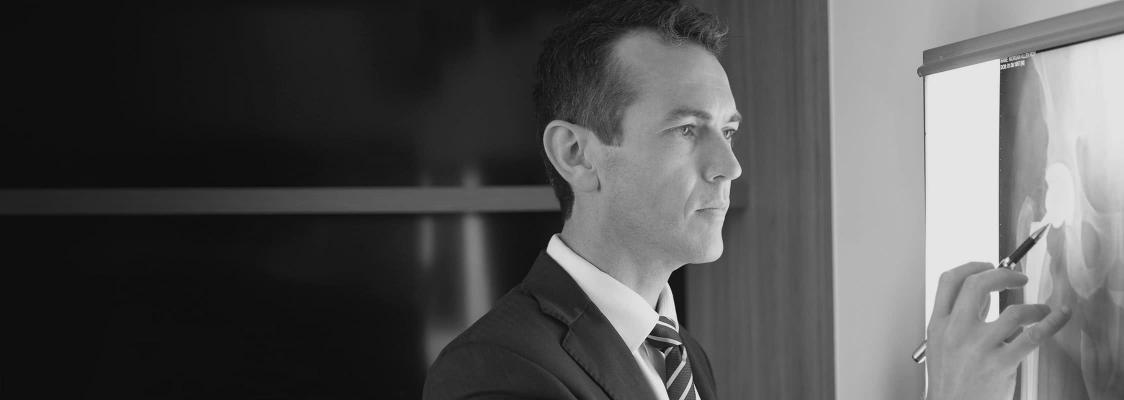There are 4 main stabilising ligaments to the knee. These are: the Anterior Cruciate Ligament, the Posterior Cruciate Ligament, the Medial ligament and the Lateral Ligament. The knee ligaments allow the knee to move in appropriate directions but prevent the knee from moving in un-natural directions.
The Anterior Cruciate ligament lies in the very centre of the knee joint. It is a strong band of tissue made up of multiple bundles of collagen fibres. It is approximately 2-2.5cm long and runs from the femur bone (thigh bone) down to the top of the tibia bone (shin bone). Its main function is to stabilise the knee to prevent unwanted forward-backward motion and to limit the amount of twisting motion that can occur through the knee joint. It is important to realise that a small amount of rotation motion occurs through the normal knee joint (this can be seen by feeling your knee whilst rotating your foot inwards and outward whilst sitting in a chair with the knee bent to right-angle).
During cutting, pivoting or twisting motions, excessive rotation motions can be placed through the knee joint. This can place severe stretch onto the ACL ligament and cause it to fail. Most often, this type of event occurs during sports when the athlete makes a sudden movement to change directions by pushing hard off one side (e.g. – trying to “step” another player whilst playing football or turning suddenly whilst following the play in court sports). This can also occur when landing awkwardly from a jump or trying to change speed / direction on landing (a common cause of injury in Netball). Usually, the injury occurs in open play – that is, there is no collision or contact with another player / competitor at the time of the injury event.
Most people have a very clear recall of the injury event and often describe hearing or feeling a “pop” from within the knee. Other players sometimes hear this as well. The knee is usually too painful to walk on and it swells quite rapidly.
X-Rays may sometimes show very subtle but specific indicators of the underlying injury (the “Segond Fracture” and the “lateral sulcus sign”), but they are usually quite normal looking. MRI scan identifies the injury well and also identifies any other associated injuries (such as a meniscus tear).
Following the initial injury and a period of acute pain (days to weeks), the knee often settles quite well and allows for normal walking as well as bending and straightening. Some fortunate patients can cope with the loss of the ACL and can undertake most activities of daily living without issue.
The knee often feels comfortable and stable enough to allow for walking (even jogging) in a straight line. Others are not so fortunate. The loss of ACL function causes the knee to feel unstable and untrustworthy. The knee can give way with twisting or pivoting motions. The knee may feel unstable during normal day-to-day activities or the instability may only become apparent when a return to pivoting sports is attempted.
At the time of the initial injury, or with any subsequent episode of instability, other structures within the knee can also be injured – the most common additional injury being tearing of the meniscus cartilages of the knee. The meniscus cartilages (2 of them per knee) play a very important role in knee function. Although it is often possible to repair meniscus tears at the time of ACL reconstruction surgery, it is preferable if the meniscus cartilages are not injured. For this reason, it is important to avoid any additional episodes of instability/giving way of the knee whilst the knee is unstable. This usually means avoidance of pivoting and jumping sports as well as moving over uneven terrain.
It is important, however, to regain the normal motions of the knee (and attempt to return to normal walking over flat and level surfaces) following an ACL tear. The loss of the ACL usually doesn’t prevent normal knee motion, weight bearing ability or straight-line walking ability. Recovery from ACL reconstruction surgery is much more rapid if the knee has regained normal motion and swelling has had an opportunity to settle. A formal physiotherapy program PRIOR to ACL surgery can be very helpful in this regard – this is often termed “PREHABILITATION” of the knee.
